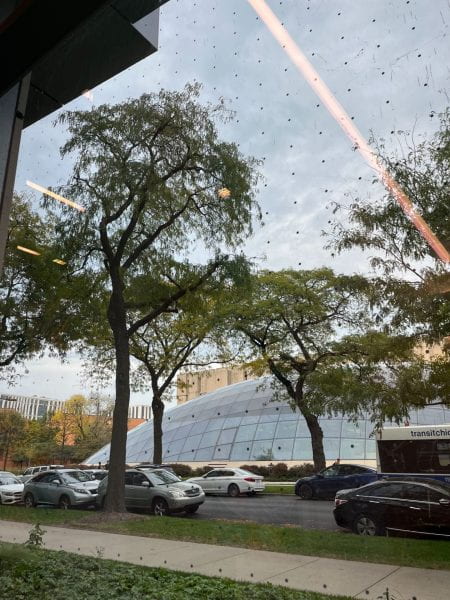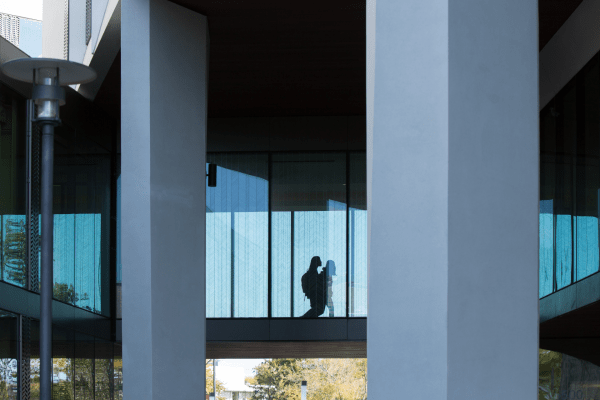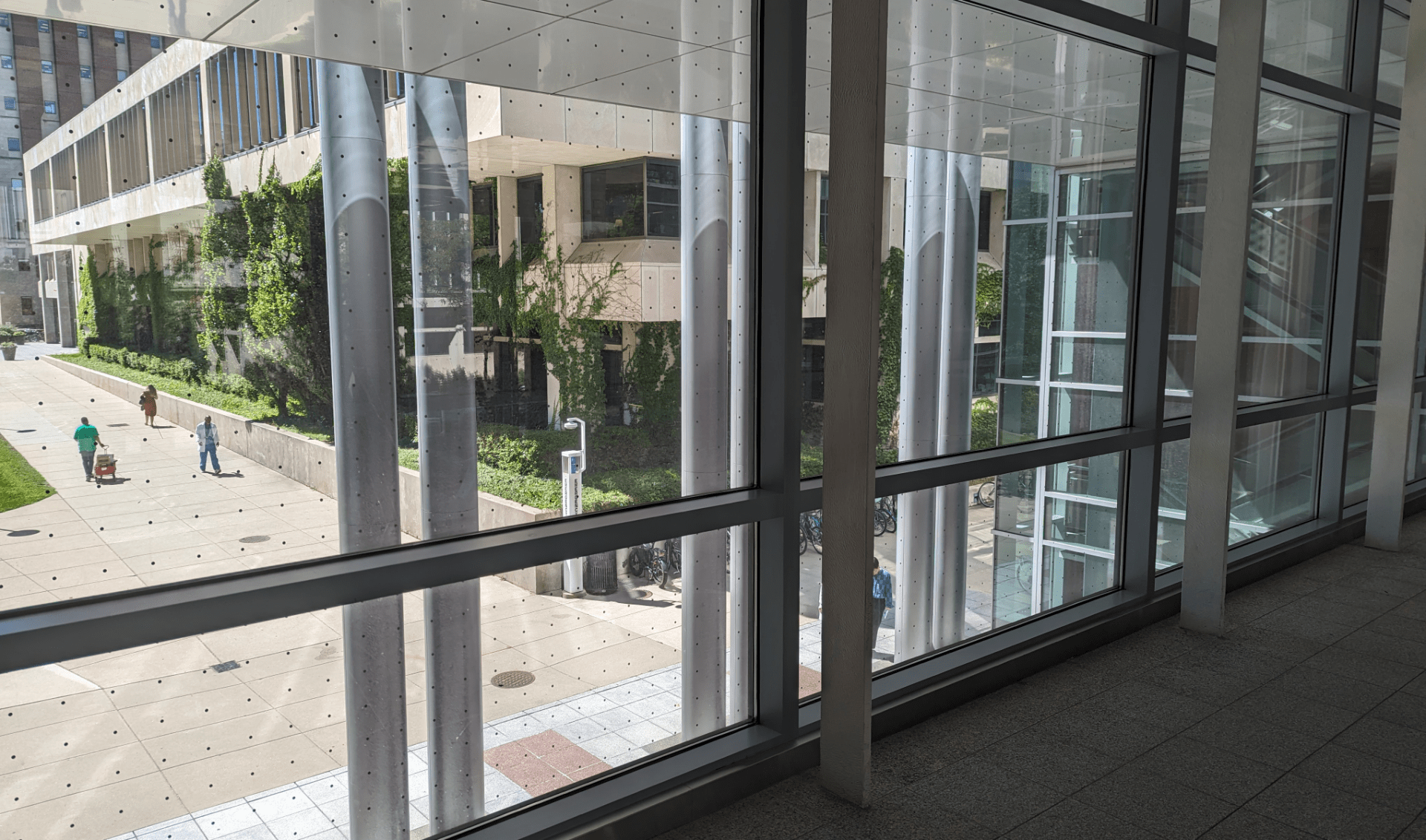Sustainability guidelines rebalance glass architecture’s impact on migrating birds
By Maureen McMahon
For avid birder Aaron Turkewitz, spring and autumn migration seasons were always an exciting time of year in Chicago. The professor of molecular genetics and cell biology enjoyed observing birds like warblers and thrushes in Hyde Park skies as they made their way across the Mississippi Flyway, a popular route which stretches from Canada to South America.
“Over my thirty years walking to campus, I’ve seen a lot of changes,” he said. “One large set of changes was the construction of new buildings with glass or the replacement of brick in old buildings with glass.”
Expanses of glass look like open space to birds, who cannot detect the surface barrier and strike the glass.
“Migration season changed from a season of joyfulness to one I dreaded—because of all the bird collisions,” he said.

Photo of Prof. Aaron Turkewitz
Anthropogenic bird collisions made national headlines this October, when, in just one night, a thousand birds fatally crashed into Chicago’s McCormick Place Lakeside Center, a convention center located on the shore of Lake Michigan. Volunteers working with Chicago Bird Collision Monitors collected another thousand around downtown.
The combination of climatic conditions, such as cloudy skies and favorable winds for mass migration, expanses of glass, and light pollution contributed to the enormous collision event that killed more birds in one day than typically strike McCormick in one year.
The seriousness of this issue was elevated to a campus committee on bird safety about ten years ago when Turkewitz and another avid birder on campus, Ingrid Gould of the Office of the Provost, and other concerned faculty, staff, and students, collaborated with Facilities Services. The committee was charged with researching bird-safe materials for retrofitting existing buildings that posed the highest threats to birds as well as optimal materials for new construction.
Facilities Services funded a campus study conducted on the days of migration seasons, that was designed and run by Prof. Greg Dwyer in ecology and evolution and Dr. Alison Hunter in biological sciences. Rigorous statistical analysis ranked a dozen different campus buildings on the risk they pose to birds. These rankings then became a targeted list for upgrades.
Since then, “there has been a sea change in what’s going on in campus,” said Turkewitz.

The view from ERC shows dotted decals on the windows. The elliptical dome of the Joe and Rika Mansueto Library is made from performance Low E fritted glass. At the upper area of the dome, the glass incorporates 57% shading with a ceramic frit dot pattern applied to the interior of the external surface of the insulated glass.
Alicia Berg, assistant vice president for Campus Planning + Sustainability, was one of the leaders of that campus committee on bird-safe design. “The need to protect birds really came to our attention in 2015 when we experienced how the glass on the new William Eckhardt Research Center (ERC) impacted migrating birds,” she said. “We absolutely had to address this from a sustainability standpoint, and from a humane one.”
Facilities Services installed a set of vertical cords, known as an acopian curtain, that was draped along portions of the façade during migration seasons to signal to birds that there is a barrier. Still, “the cords needed to be installed and removed at optimized intervals for the birds to detect them, and when they tangled in the wind, birds would try to fly through,” Berg said. “We needed to keep searching for better solutions.”
Recently Katie Martin Peck, associate director for Campus Environment, identified a solution for ERC and other existing buildings on campus: applying a decal product with opaque patterning to the east and south facing glass façades to make them more visible to birds. This same product was also applied on the aerial passageway to the Gordon Center for Integrative Science (GCIS) and on the Laird Bell Law Quadrangle.
Martin Peck explained, “The specific pattern on the decals selected as our new campus standard—a three inch grid of small dots—was selected because of its balance of high effectiveness in bird safety with minimal area of opaque patterning, which is achieved by a simple architectural grid.”
“I’ve seen the numbers drastically go down where there are decals,” reported Turkewitz. “I haven’t seen a single collision this season on the GCIS passageway. I am, however, concerned that ERC patio’s maturing trees have become a popular bird habitat surrounded by glass without decals.”
In addition to putting lights on timers to lessen light pollution at night, new campus buildings have incorporated fritted—or patterned and less reflective—glass into designs.
“The human eye tends to focus through fritted glass to the view beyond, like a screen on a window, but birds register the pattern created by the frit and know not to fly through it,” said Martin Peck.

Fritted glass can be seen through out Campus North Residential Commons. (Photo by Anne Ryan)
Designs for Keller Center, David Rubenstein Forum, and Campus North Residential Commons incorporated fritted and other types of bird-safe glass into areas where bird strikes are most common.
In 2016, there was proof positive that Turkewitz and Gould’s passion for bird safety had spread throughout the planning culture at the University when bird-safe design became codified as a performance-based guideline for construction projects in Facilities Standards (FS)2. In a sustainability achievement for campus, all designs must protect birds in flight.

